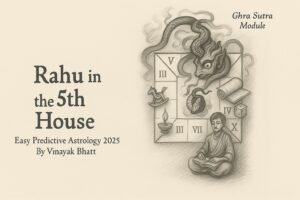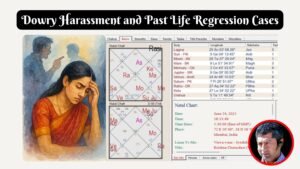Erroneously Defined Lunar Months of the Present Sidereal Calendar and the Way to Rectify It by Buddhike Sri Harsha Indrasena
Article by Buddhike Sri Harsha Indrasena, Sri Lanka
Introduction
The Hindu festival calendar in practice today is a sidereal luni-solar calendar. In this calendar, a year of 365.2425 days consists of 12 sidereal solar months.
- Meṣa (Aries)
- Vṛṣabha (Taurus)
- Mithuna (Gemini)
- Karka (Cancer)
- Siṃha (Leo)
- Kanyā (Virgo)
- Tula (Libra)
- Vṛścika (Scorpio)
- Dhanus (Sagittarius)
- Makara (Capricorn)
- Kumbha (Aquarius)
- Mīna (Pisces)
The sidereal solar month begins when the sun enters the respective sidereal sign.
In addition there are 12 synodic lunar months. Synodic lunar months are Tithi based, and there are two types called Amantha and Purnimantha. In the Amantha system the month starts with the new moon; in the Purnimantha system the month ends with the full moon. In the rest of the discussion only the Amantha system has been considered to avoid repetition.
The lunar months are named as
- Chaitra
- Vaiśākha
- Jyaiṣṭha
- Āṣāḍha
- Śrāvaṇa
- Bhādrapada
- Āśvina
- Kārtika
- Mārgaśīrṣa
- Pauṣa
- Māgha
- Phālguna
The lunar months are named according to the name of the Nakshatra in which the full moon falls. This is an important definition which cannot be violated, but is being violated frequently in present day sidereal calendars, and will be discussed in length later.
The average duration of a synodic lunar month is 29.530589 days. Therefore the length of the synodic lunar year is 354.36707 days. Usually there is only one lunar month in a solar month. But because the sidereal solar year is 10 days longer than the synodic lunar year, it is necessary to add (Adhika masa) and omit (Kshaya masa or Mala masa) lunar months periodically.
At present the addition of extra months and the omission of lost months are done using the solar months as follows. If there are two new moons in a single sidereal solar month, the first month is called the Adhika masa and the second month is called the Nija masa. If the sun enters two sidereal signs within one lunar month, that lunar month is called a Kshaya month or lost month because no Amavasya (new moon) occurs in such a solar month. All luni-solar sidereal calendars available today use the above criterion to decide extra months and lost months.
Let us try to understand this with examples:
Example 1: Adhika masa
Sidereal solar month Gemini in 2015 extends from June 15 to July 17. There are two Amavasya days occurring in this solar month, the first on June 16 and the second on July 16. The first lunar month is the Adhika masa and the second lunar month is the Nija masa.
Example 2: Kshaya masa
In 504 AD, sun entered Capricorn on December 24th at 11.02 AM IST and entered Aquarius on January 23rd at 0.20 AM IST (January 22nd). Both transits happened during one lunar month. The first Amavasya was on December 24, 504 AD and the second Amavasya was on January 23, 505 AD. There was no new moon occurring during the sidereal solar month of Capricorn. So the lunar month of the solar month of Capricorn is lost.
Objectives
However there are flaws in the above definition of Adhika and Mala masa because lunar months have been defined in relation to the solar months. In other words, the solar months decide the name of the lunar month. This is not a rational approach and does injustice to the lunar months. It is necessary to understand that in Hindu culture most of the festivals are celebrated according to the lunar months rather than the solar months. Therefore it is necessary to maintain the importance of lunar months without being pegged with solar months, and the objective of this article is to point out the correct method.
Principles from Suryasiddhantha
According to the Suryasiddhantha, the lunar month gets its name from the asterism in which the full moon falls (“The months are to be known by the names of the asterisms (nakshatra), according to the conjunction (yoga) at the end of a lunar period (parvan) – Chapter 14, Verse 15)”.
In Verse 16 of Chapter 14, Suryasiddhantha further says “To the months Krittika etc. belong, as concerns the conjunction (samayoga), the asterisms Krittika etc. two by two: but three months, namely the last, the next to the last, and the fifth, have triple asterisms”.
Burgess in his commentary to the Verse 16 gives the following table to identify the month according to the full moon falling in particular groups of Nakshatra (Table 1).
Table 1: Relationship between the asterisms and lunar month
| Month | Asterisms in which full moon may occur |
| Kārtika | Krittika, Rohini |
| Mārgaśīrṣa | Mrgasirasa, Ardra |
| Pauṣa | Punarvasu, Pushya |
| Māgha | Aslesha, Magha |
| Phālguna | P. Phalguni, U. Phalguni, Hasta |
| Chaitra | Citra, Swati |
| Vaiśākha | Vishakha, Anuradha |
| Jyaiṣṭha | Jyeshtha, Mula |
| Āṣāḍha | P. Ashadha, U. Ashadha |
| Śrāvaṇa | Sravana, Sravishta |
| Bhādrapada | Sathabhsha, P. Bhadrapada, U. Bhadrapada |
| Āśvina |
Revati, Ashvini, Bharani |
Varahamihira in Suryasiddhantha does not give any exceptions to the above rules. Further he does not tell us to consider solar months, whether seasonal or sidereal, to decide the name of the lunar month. The name of the lunar month has to come from none other than the Purnima Nakshatra of the month.
Erroneous naming of lunar months in present calendars
If you carefully go through the present calendars you will see that most of the time the lunar months have been named correctly but there are plenty of exceptions not necessarily related to Kshaya masa and Adhika masa.
Example 1: Adhika masa
July 2, 2015, is the Adhika Ashadha Purnima, and the Purnima falls in Poorva-ashadha, which is compatible with the naming.
July 31, 2015 is the Nija Ashadha Purnima. But what is the Nakshatra of this day? It is Sravana. According to the Table 1, the month cannot be named as Ashadha if the full moon falls in Sravana. If the full moon falls in Sravana, the month has to be Sravana.
Example 2: Mala masa
In December 504 AD, the month Pausha is a Kshaya masa according to Jagannatha Hora software (using Lahiri’s Ayanamsha). Margasira month ends on 24th December and the month Magha starts from December 25th. In the above table there is a month called Pausha between Margasirasa and Magha, but Pausha is missing from the existing sidereal calendar.
In the month of Margasira, the full moon falls in Ardra on December 9. This is compatible with the two asterisms of Margasira month.
In the month of erroneously named Magha, the full moon falls in Pushyami on January 8. According to the Table 1 above, in the month of Magha the full moon has to be in Aslesha or Magha. If the full moon falls in Pushya, the month has to be Pausha.
Example 3: Ordinary months
Please go through the lunar months and the corresponding full moon Nakshatra continuously from November 3, 2009 to January 30, 2010 over a period of four months (Table 2). It will be evident that the names of the lunar months do not follow the Purnima Nakshatra groups given in Suryasiddhantha.
Table 2: More examples of erroneous lunar month names in the present calendar
|
Date |
Purnima Nakshatra |
Name of the
Lunar month in present calendar |
Right / Wrong |
| October 4, 2009 | Revati, | Aswayuja | Right |
| November 3, 2009 | Bharani | Karthika | Wrong (Aswayuja) |
| December 2, 2009 | Rohini | Margasira | Wrong (Karttika) |
| January 1, 2010 | Aardra | Pushya | Wrong (Margasirasa) |
| January 30, 2010 | Pushyami | Magha | Wrong (Pushyami) |
| February 28, 2010 | Poorva Phalguna | Phalguna |
Right |
Rectifying the nomenclature of lunar months
Example 1: Adhika Masa
There cannot be a Nija Ashadha in 2015 if the Purnima Nakshatra is Sravana. The Nija Ashadha must be renamed as Sravana because the full moon of that month does not fall in P. Ashadha or U. Ashadha.
Example 2: Mala masa
In January 505 AD, there cannot be a Magha because full moon in that month falls in Pushyami. This month has to be correctly renamed as Pausha, which in present system is erroneously considered to be a Mala masa. But there is no full moon falling in Magha in December 504 AD or January 505 AD or February 505 AD. This means the month Magha is the Mala masa instead of Pausha.
Example 3: Ordinary months
The names of the lunar months in Table 2 have to be changed as follows.
Table 3: Erroneous and rectified names of the lunar months
|
Date |
Purnima Nakshatra |
Name of the
Lunar month in present calendar |
Rectified name of The Lunar month |
| October 4, 2009 | Revati | Aswayuja | Aswayuja (No change) |
| November 3, 2009 | Bharani | Karthika | Aswayuja |
| December 2, 2009 | Rohini | Margasira | Karttika |
| January 1, 2010 | Aardra | Pushya | Margasirasa |
| January 30, 2010 | Pushyami | Magha | Pushyami |
| February 28, 2010 | Poorva Phalguna | Phalguna |
Phalguna (No change) |
Revised Principles to identify Mala masa and Adhika masa
Accordingly it is not possible to define Adhika masa and Mala masa in relation to solar ingress to sidereal solar months. If we do so, it will violate the essential features of nomenclature of the lunar months as given in Suryasiddhantha. As seen in Table 2 wrong names will be given to lunar months even when such months are not related to Adhika masa and Mala masa! The name of the lunar months must be in accordance with the Purnima Nakshatra and there cannot be exceptions to this rule (Suryasiddhantha Chapter 14, Verses 15 and 16).
The following principles must be adhered to to name lunar months correctly.
- The name of the month must come always from the Purnima Nakshatra (group of Nakshatra)
- The month has to be declared Kshaya, when the full moon does not fall in a particular Nakshatra group as expected.
- When two full moons occur in the same group of Nakshatra in succession, the former is the Adhika masa and the latter is the Nija masa.
This can be clarified with the data in Table 2 and 3 as follows.
In October and November, 2009, there are two Aswayuja months. The former month has to be named as Adhika Aswayuja and the latter as Nija Aswayuja. The present names of Aswayuja and Karthika are wrong.
In December and January the months are Karttika, Margasirasa and Pausha respectively (not Margasirasa, Pausha and Magha as given in the present erroneous nomenclature).
After Pausha there is no Magha but Phalguna in February 2010. This means Magha is a Kshaya masa (there is no Kshaya masa according to the present erroneous calendar).
Conclusion
The synodic lunar months must be named according to the Purnima Nakshatra of the corresponding months. There are no exceptions to this rule according to Varahamihira. The Mala masa and Adhika masa must not be decided by the sidereal solar sankranthis lest it does injustice to lunar months. The solar months and lunar months are independent of each other. The solar months should not be used to decide the lunar months. Otherwise the names of the lunar months would not follow the principles given in Suryasiddhantha.
About Author: I started reading on Vedic astrology when I was 15 years old. I learnt by self study. In addition to classic Vedic astrology I am also interested in Western astrology, Magi Astrology and a few modern variants of Vedic astrology. I incorporate and blend all branches of astrology known to me when analysing charts which I do as a hobby at leisure time and am a consultant surgeon by profession. The best single word that I can find as of today to describe astrology is “Astrology is a Science”, and as such we should not stick ourselves only to ancient texts.











Leave a reply
You must be logged in to post a comment.